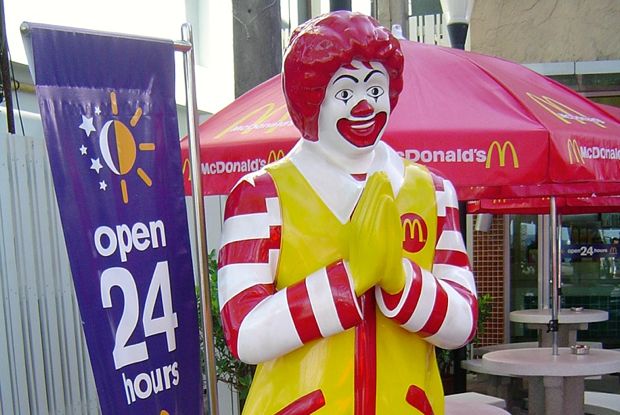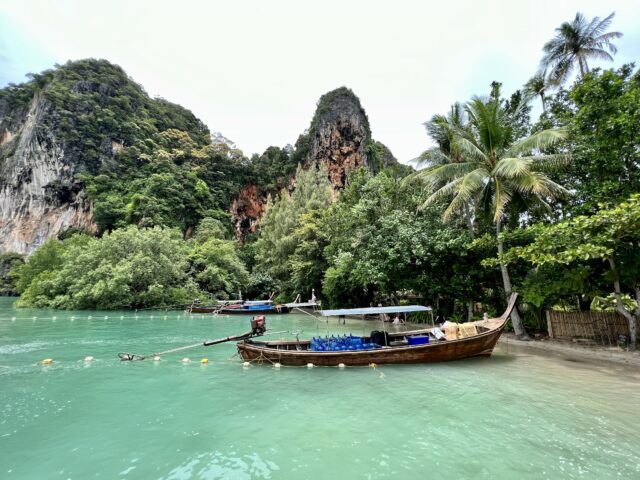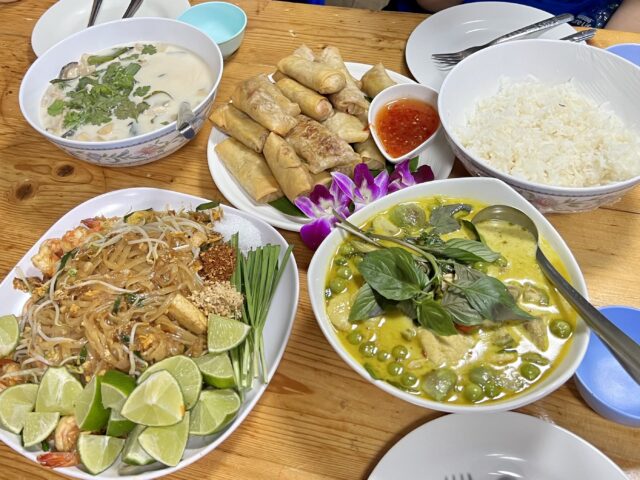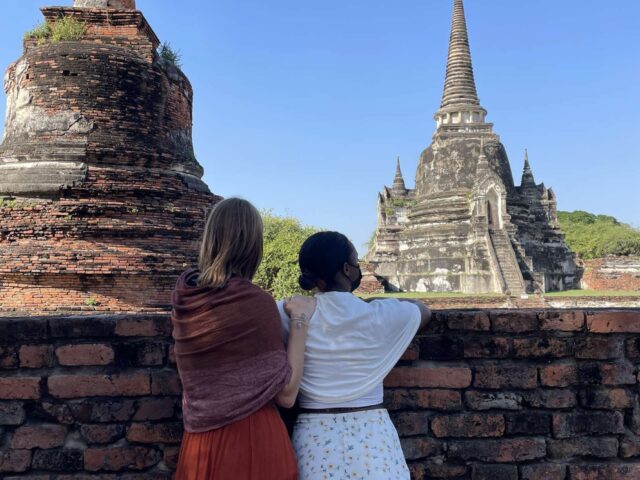
In a country where 95% of the population identifies as Buddhist, it’s easy to understand how religion would have a huge impact on the culture of Thailand. It’s easy to get confused by some of the cultural differences without some understanding of Buddhism. However, with a little knowledge, noticing Buddhism’s influence on the country becomes less intimidating – and very interesting.
The first and most obvious influence of Buddhism you may notice when you come to Thailand is the wai, or a small bowing gesture used when greeting someone.
Many of the TEAN Thailand group (myself included) arrived thinking we should wai to everyone. However, you quickly learn that you generally only wai to people farther up in the social hierarchy than you. (This hierarchy could spawn an entire other discussion, but it’s relatively intuitive.) For example, although you may greet your cashier at 7 Eleven with “sa-wat-dee-krap”, you most likely wouldn’t wai to them.
On the other hand, it is customary to wai to monks if they are in close proximity, though they never wai back. The wai gesture itself is thought to come from the Buddhist act of prostration, or putting one’s hands together and bowing to the ground.

Speaking of monks, it’s important to know how to behave around them. The Buddhist scriptures state that they cannot touch females, so try to avoid this at all costs. Many public places such as airports and bus stations have separate areas for them to sit and meditate, so don’t make a spectacle of them.
Temples, or wats, contain a variety of Buddhist structures and many also act as monasteries. The central point is usually the stupa (or jedi in Thai), and according to popular Buddhist practice, one can increase their good karma by walking around it three times. This is also called “making merit”.
One can also make merit by providing food to monks when they go on their alms rounds in the morning. However, monks are not allowed to handle money, so if one asks for a donation, they’re probably not a real monk.

The most prominent (and fun) practice of Buddhism in Thailand is the celebration of Songkran, the Thai New Year. Much of Thailand, and especially Chiang Mai, breaks out into a country-wide water fight. Everyone, Buddhist or non-Buddhist, Thai or non-Thai, are invited.
One of my favorite parts of Buddhism in general and specifically in Thailand is the level of inclusivity. Whenever my study abroad friends and I visit temples, we always feel welcomed. Occasionally, we have brief conversations with the monks and talk about anything from where we’re from to the history of the temple. Because these are holy places where monks and laypeople practice their religion, it’s important to be modest: shoulders must be covered and pants must be long.
While Buddhism has played a big part in developing Thai and Southeast Asian culture, I’m always impressed as to how inclusive the religion is. Despite the fact that I’m not a practicing Buddhist, I always feel welcome at temples, ceremonies, and other religious events.
My friends and I have attended talks by monks, learned about monks’ personal experiences with Buddhism, and been included in giving alms. In all, Thailand is a great place to learn about a new culture while learning about a new religion at the same time.
Chad Stein is a student at the University of Pittsburgh and a TEAN Featured Blogger. Chad is currently studying abroad with TEAN on the Thailand/Vietnam semester program.







